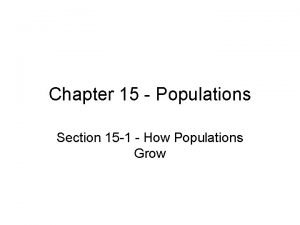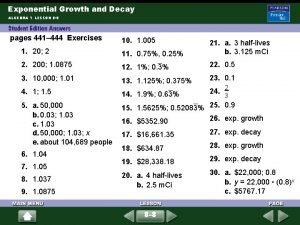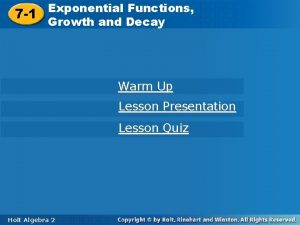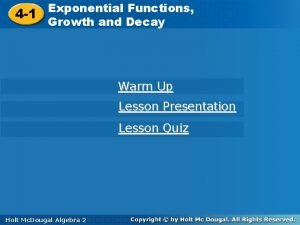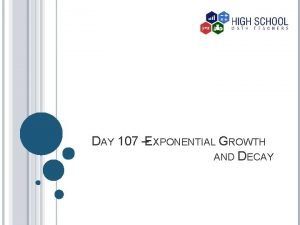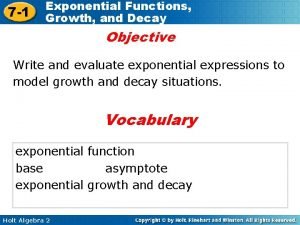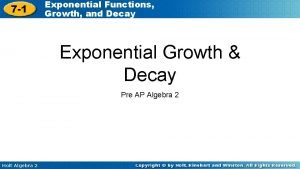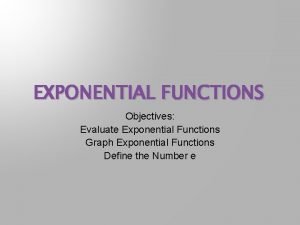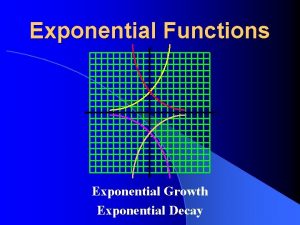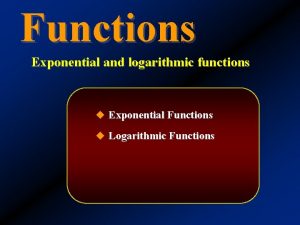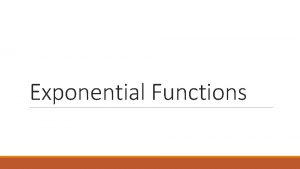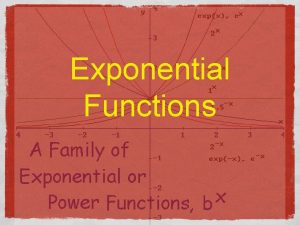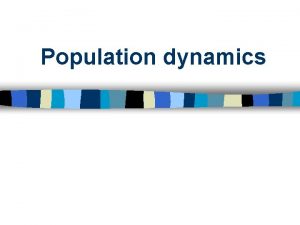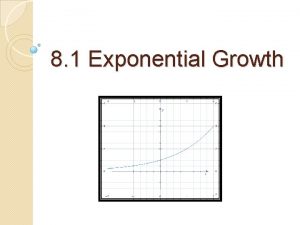Applications of Exponential Functions Population Growth Population growth








- Slides: 8

Applications of Exponential Functions

Population Growth Population growth can be modeled by the basic form of the exponential function y = abx. Growth: b > 1 b = “growth factor” a = “initial amount” x = time y = ending amount

Population Growth In 2003, the population of the popular town of Smithville was estimated to be 35, 000 people with an annual rate of increase (growth) of about 2. 4%. 1. What is the growth factor? After one year: 35, 000 + (0. 024)(35, 000) Factor out 35, 000(1 So, + 0. 024) = 35, 000(1. 024) the growth factor is 1. 024

Population Growth 2. Write an equation to model future population growth in Smithville. x y = ab x y = a(1. 024) x So, y = 35, 000(1. 024) , where x is the number of years since 2003.

Population Growth 3. Use the equation that you’ve written to estimate the population of Smithville in 2007 to the nearest one hundred people. 4 y = 35, 000(1. 024) = 38, 482. 91 = 38, 500

Compound Interest What is interest? Compound Interest: Interest that is earned on both the principal and any interest that has been earned previously. Balance: The sum of the Principal and the Interest

Compound Interest Formula: A: the ending amount P: the beginning amount (or "principal”) r: the interest rate (expressed as a decimal) n: the number of compoundings in a year t: the total number of years

Compound Interest Jackie deposits $325 in an account that pays 4. 1% interest compounded annually. How much money will Jackie have in her account after 3 years? 1(3) A = 325(1 + 0. 041) A = 325(1. 041) 3 1 A = $366. 64 years. Jackie will have $366. 64 in her account after 3
 Define exponential population growth
Define exponential population growth Exponential growth curve of a hypothetical population
Exponential growth curve of a hypothetical population Geometric exponential growth
Geometric exponential growth Lesson 13-1 exponential growth functions answers
Lesson 13-1 exponential growth functions answers Growth or decay exponential
Growth or decay exponential Exponential decay function
Exponential decay function Exponential decay and growth
Exponential decay and growth How to know if a function is growth or decay
How to know if a function is growth or decay Lesson 7-1 exponential functions growth and decay
Lesson 7-1 exponential functions growth and decay

